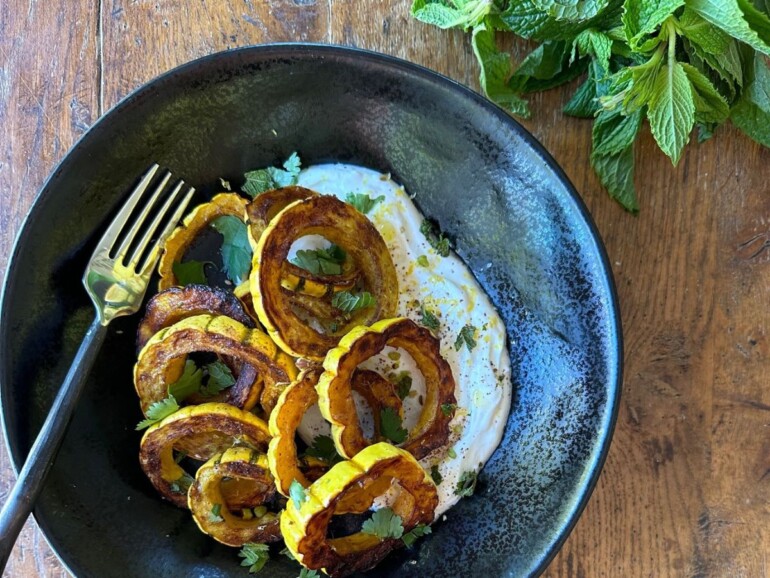It’s said that an apple a day will keep the doctor away. You should consider adding fermented foods to your daily diet, too.
Fermentation is an ancient method of food preservation. The process of fermentation occurs when a sugar or starch is converted into an acid or alcohol by yeast, bacteria or mold. This process creates an environment that allows probiotics, which are friendly bacteria, to thrive and multiply. Probiotics have many health benefits that keep your body healthy and working well. They maintain and nourish the microbiome in the gut, support the immune system and make certain nutrients easier to absorb. This helps to improve digestion and heart health, reduce inflammation, control cholesterol and aid in cancer prevention.
As wonky as this may sound, fermented foods are regularly found in our diet. Common foods include yogurt, kefir, kimchi, sauerkraut, miso, and vinegar; even cheese and charcuterie are fermented products. Fermented foods are not only healthy, they are delicious on their own or as a flavor enhancing ingredient. So, grab that apple and, while you’re at it, add some fermented food to your daily diet. Your gut and immune system will thank you.
Bircher Muesli with Kefir
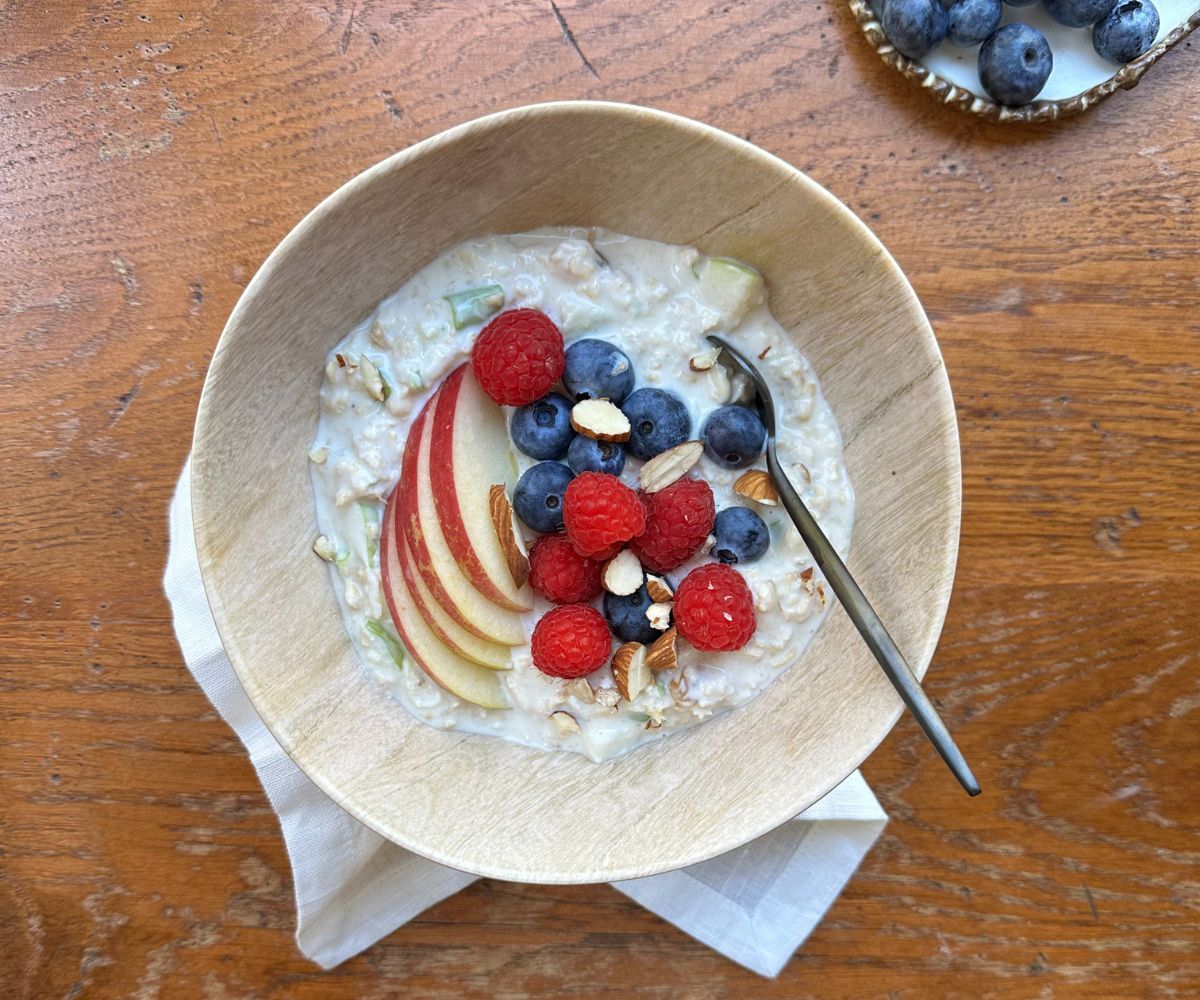
The Swiss were onto something when their version of overnight oats was devised as a fortifying snack. Bircher muesli is comprised of oats soaked in milk and yogurt with fruit. In this recipe, kefir replaces the yogurt and milk. Kefir is made from fermented cow’s or goat’s milk and is rich in protein, nutrients and probiotics. To make kefir, a starter culture of kefir grains, which are colonies of yeast and lactic acid bacteria, is added to milk. The lactic acid bacteria in the grains turns the milk’s lactose into lactic acid, resulting in kefir, which has a creamy and thin yogurt consistency.
Serves 2
- 1 1/2 cups kefir
- 1 cup old fashioned oats
- 2 crisp apples, such as Granny Smith and/or Honeycrisp
- 1/4 cup golden raisins
- 1 tablespoon runny honey or maple syrup, or more to taste
- Pinch of kosher salt
Toppings:
Fresh blueberries, raspberries and chopped, raw almonds
- Combine the kefir and oats in a glass bowl or container. Cover and refrigerate overnight.
- Coarsely grate one apple with the skin. Finely dice half of the second apple, and thinly slice the remaining half.
- When ready to serve, stir in the grated and diced apples, the honey and salt.
- Divide the bircher muesli between bowls. Fan the remaining apple slices over each bowl. Top with the blueberries, raspberries and almonds. Drizzle with additional honey if desired.
Roasted Delicata Squash with Labneh
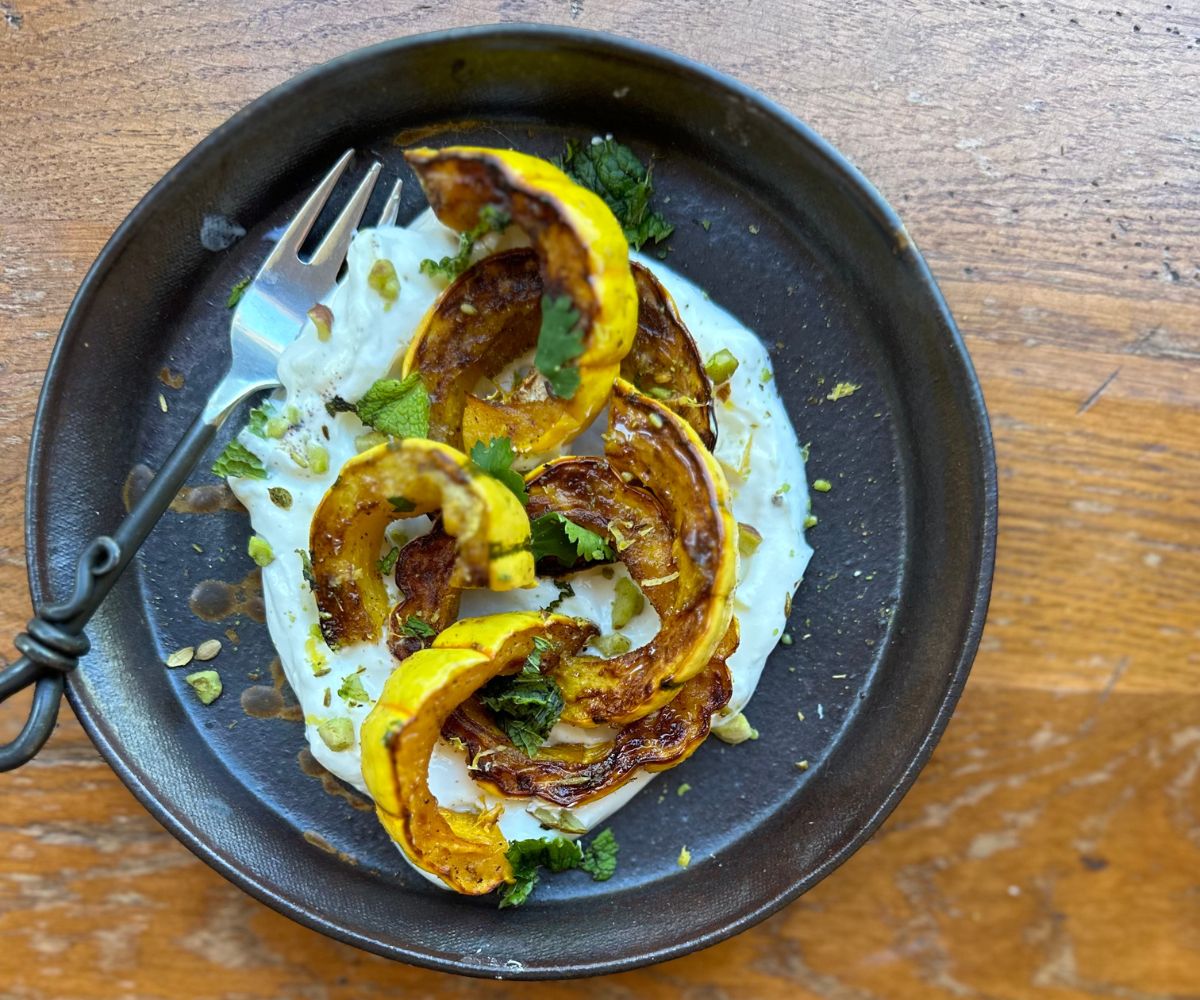
Labneh is a soft cheese made from strained cultured dairy products, such as yogurt and kefir. It’s a tangy, creamy Middle Eastern staple, commonly used as a dip and spread, and it’s packed with probiotics and nutrients such as calcium and vitamin A. You can make your own labneh or purchase it in well stocked supermarkets.
Serves 4
Squash:
- 2 medium delicata squash, sliced crosswise 1/2-inch-thick, seeds removed
- 1 tablespoon olive oil
- 1/2 teaspoon ground cumin
- 1/2 teaspoon ground coriander
- 1/2 teaspoon kosher salt
- 1/4 teaspoon freshly ground black pepper
Labneh:
- 1 cup prepared labneh (recipe below)
- 1/2 preserved lemon, pulp removed, skin finely diced, divided
- 1 small garlic clove, minced or pushed through a press
- 2 teaspoons fresh lemon juice
- 1/2 teaspoon za’atar
Garnishes:
Chopped fresh mint, chopped pistachios, finely grated lemon zest
- Heat the oven to 400°F.
- Place the squash in a bowl. Drizzle with the oil and toss to coat. Sprinkle the cumin, coriander, salt, and black pepper over the squash and toss again to evenly coat.
- Spread the squash in one layer on a rimmed baking sheet lined with parchment paper. Roast in the oven until tender and charred in spots, about 25 minutes, flipping the squash once.
- While the squash roasts, scoop the labneh into a bowl. Add half of the preserved lemon skin, the garlic, lemon juice, and za’atar and stir to combine.
- To serve, smear the labneh on a serving platter or individual serving plates. Arrange the squash over the labneh. Garnish with the remaining lemon skin, chopped mint, pistachios and lemon zest.
Labneh
Makes about 2 cups
- 4 cups whole milk plain yogurt
- 1/2 teaspoon kosher salt
Mix the yogurt and the salt in a bowl. Line a sieve with cheesecloth and place over a bowl, with space between the bottom of the sieve and the bowl to separate any drained liquid. Place the yogurt in the cheesecloth. Cover the bowl and refrigerate for 24 hours. Remove the labneh from the cheesecloth and transfer to a glass container. Store in the refrigerator for up to one week.
Miso Glazed Halibut
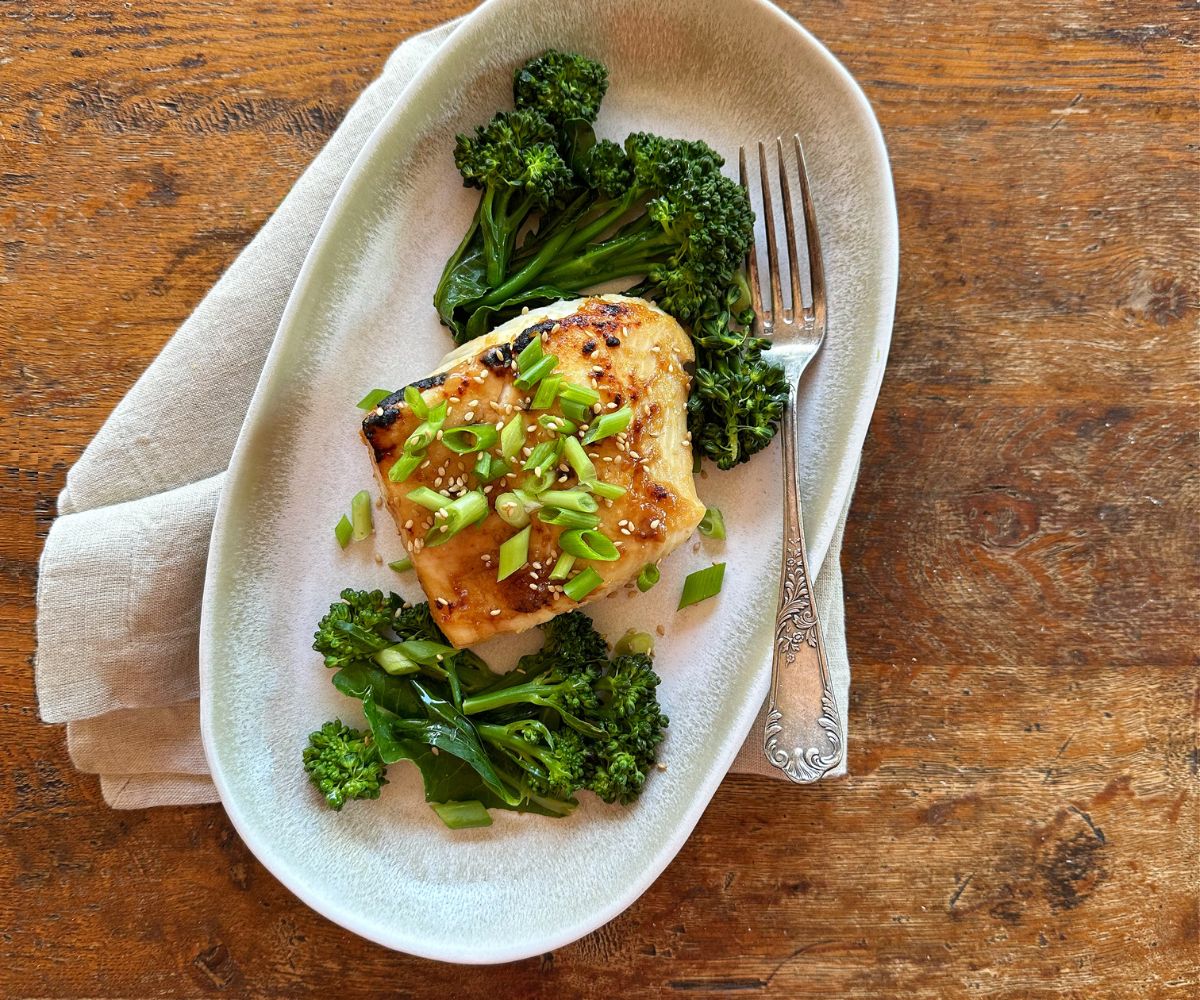
Miso is a paste made from soybeans that are fermented with salt and a koji starter. Miso is a complete source of protein and is rich in vitamins, minerals and antioxidants. Its fermentation process promotes the growth of probiotics. Miso has a unique savory salty-sweet quality, known as umami, which is a powerful flavor enhancer in food. Miso is also very salty, so moderate the salt you may include in a recipe with miso.
Serves 4
- 3 tablespoons white miso
- 2 tablespoons mirin
- 1 tablespoon low-sodium soy sauce
- 1 tablespoon unseasoned rice vinegar
- 1 teaspoon toasted sesame oil
- 4 center-cut halibut filets, each about 6 ounces
- Chopped scallions for garnish
- Toasted sesame seeds for sprinkling
- Whisk the marinade ingredients in a small bowl. Arrange the fish in one layer in a glass container. Pour the marinade over and turn the fish to coat. Let stand at room temperature for 30 minutes (or refrigerate for up to 2 hours).
- Line a rimmed baking sheet with foil. Wipe off all but a thin layer of marinade from the fish. Arrange the fish, skin-side down, on a baking sheet lined with foil. Broil no closer than 6 inches under the broiler element, until the top is deep golden brown, and the fish is cooked through, 6 to 8 minutes, depending on thickness of the fish. Keep an eye on the fish, as the sugars in the glaze may begin to burn. If this happens, transfer the baking sheet to a lower rack in the oven.
- Serve garnished with the chopped scallions and toasted sesame seeds.
Brussels Sprouts Kimchi
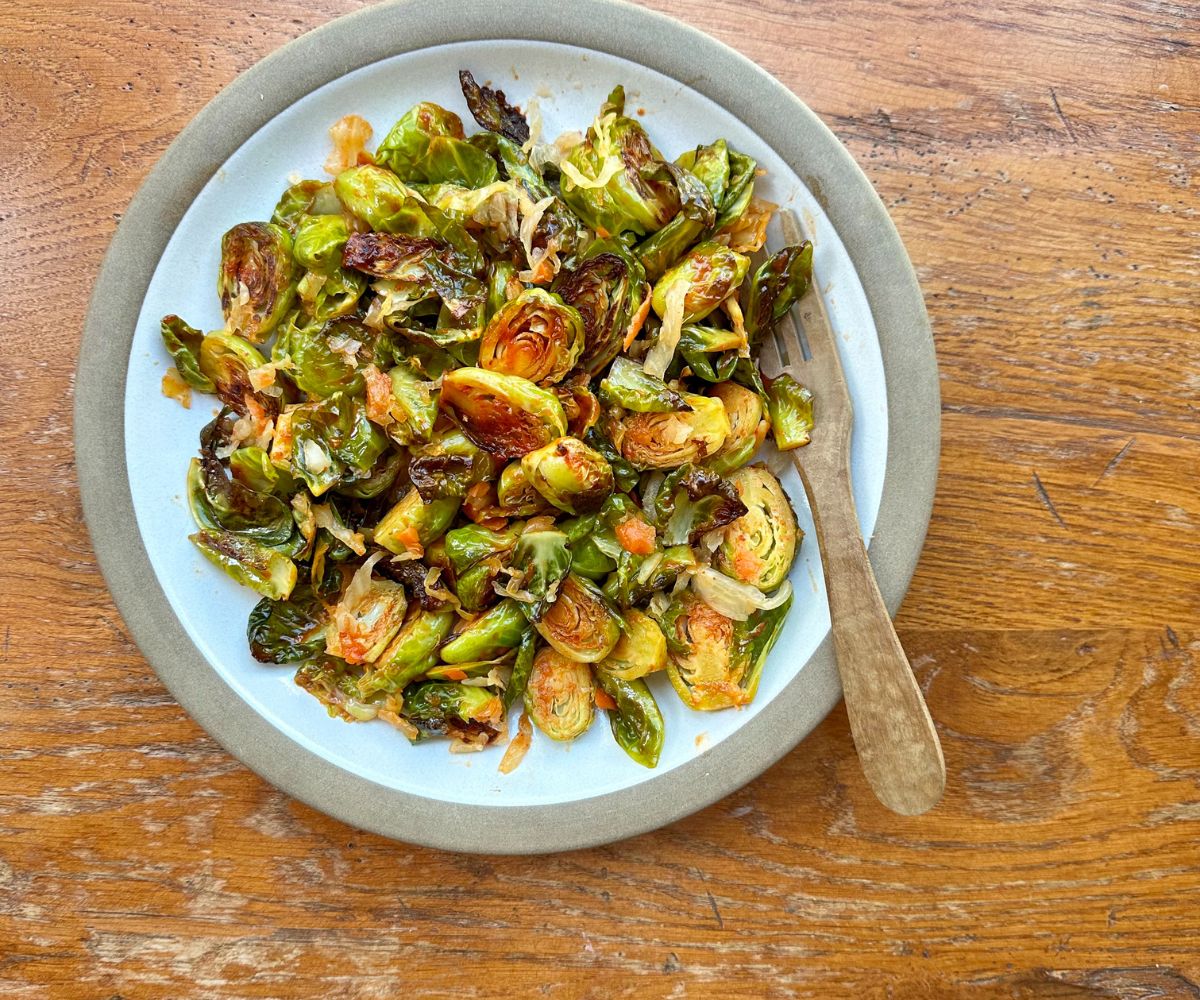
Kimchi is a traditional Korean condiment made with salted fermented vegetables. It often includes cabbage, and seasonings include salt, sugar, ginger, garlic and chiles. Kimchi is rich in nutrients and probiotics. Gojuchang is a funky, sweet, and spicy Korean paste made with fermented soybeans, chiles, and glutinous rice.
Serves 4 to 6
Sauce:
- 2 tablespoons Gochujang
- 2 tablespoons unseasoned rice wine vinegar
- 2 teaspoons runny honey
- 1 teaspoon fresh, peeled and finely-grated ginger
- 1/2 teaspoon fish sauce
- 2 pounds medium Brussels sprouts, ends trimmed, halved lengthwise
- 1 tablespoon olive oil
- 1/2 teaspoon kosher salt
- 1/2 cup drained shredded or chopped kimchi
- Whisk the sauce ingredients in a bowl.
- Preheat the oven with a large cast-iron skillet in the oven to 425°F.
- Toss the Brussels sprouts, oil, and salt in a bowl. Remove the skillet from the oven and carefully spread the Brussels sprouts in the pre-heated skillet. Return the skillet to the oven and roast until the Brussels sprouts are charred and tender, 13 to 15 minutes, depending on their size.
- Transfer the Brussels sprouts to a bowl. Add the sauce and toss to coat, then add the kimchi and gently toss. Serve warm.
Orange, Cardamom, and Rosemary Shrub
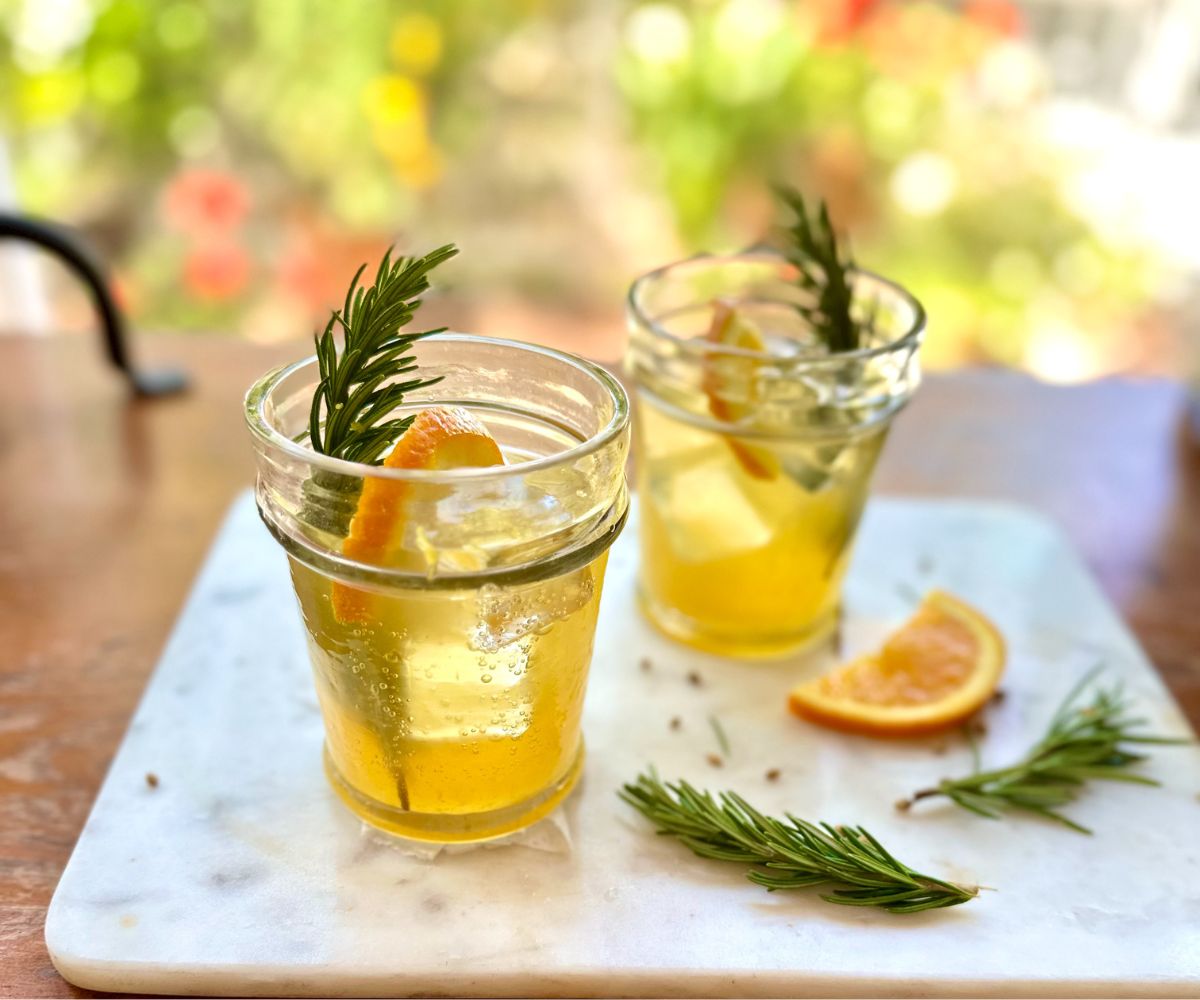
Shrubs are a cleansing refreshment as well as a flavorful syrup for cocktails. A shrub is composed of fermented fruit, vinegar and often sugar. Also known as drinking vinegar, shrubs are an old-fashioned method for preserving fruit, by mixing soft, ripe fruit with vinegar and sugar, then letting the mixture sit for a few days to macerate before straining out the solids. Vinegar is fermented from the liquid of fruit, rice and grains, and contains acetic acid which is good for the gut, and polyphenols which are strong antioxidants.
Makes about 1 1/4 cups
- 1/2 cup sugar
- 1/2 water
- 3 cardamom pods, crushed
- 1 (2-inch) cinnamon stick
- 1/2 teaspoon coriander seeds
- 2 large navel oranges, peel and pith removed, chopped
- 1 (2-inch) sprig fresh rosemary
- 1/2 cup organic, unfiltered apple cider vinegar
- Combine the sugar, water, cardamom, cinnamon, and coriander in a medium saucepan. Bring to a simmer over medium heat stirring until the sugar dissolves.
- Add the oranges with any collected juices and the rosemary sprig to the saucepan. Continue to simmer for 10 minutes. Remove from the heat and stir in the vinegar. Cool to room temperature.
- Strain the liquid through a clean fine-mesh sieve into a clean glass jar, pressing down on the solids to extract the juices. Discard the solids. Store the syrup in the refrigerator for up to one month.
- To use, add 3 to 4 tablespoons to a 6 to 8-ounce glass with ice cubes. Top with sparkling water.

Lynda Balslev is an award-winning food writer, editor and recipe developer based in the San Francisco Bay area. She authors the nationally syndicated column and blog TasteFood, and co-authored the cookbook Almonds: Recipes, History, Culture (2015 Silver Medal Winner Independent Publisher Awards). She is the 2011 recipient of the Chronicle Books Award (Recipe Writing) to the Symposium for Professional Food Writers, and a 2018 Fellowship Award recipient to the Symposium for Wine Writers at Meadowood, Napa Valley. Lynda’s writing and photography have been recognized by the New York Times Diners Journal, the Los Angeles Times, The Huffington Post and more.

